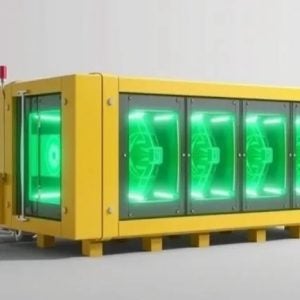The Joint European Torus (JET) fusion device, based in Culham, UK has completed eleven-months of operation with a new beryllium-tungsten lining, demonstrating the suitability for the materials for the much larger and more powerful ITER device, now under construction in Cadarache, France.
From the first test in August 2011, the beryllium and tungsten lining enabled more reliable plasmas to be produced, the Culham Centre for Fusion Energy announced in a statement.
Researchers from the 27 European fusion laboratories that participate in JET also found that “the amount of fuel being retained in the wall is at least ten times less than in the previous, carbon-based, configuration.”
“The results achieved may lead ITER to drop plans for an initial phase of operation with carbon and adopt a beryllium-tungsten wall from the outset, bringing a significant saving in time and cost for the project,” they said.
Experiments at JET will restart in early 2013. Their goal is to demonstrate further improvements in plasma performance, beyond expectations when scaled up to ITER.
Dr Francesco Romanelli, Leader of the European Fusion Development Agreement (EFDA) and JET Leader said: “These results are very encouraging for ITER. JET is getting as close to ITER conditions as any present-day fusion device can. If this performance is scaled up, ITER will be successful and take a huge step towards the goal of commercial fusion power.”






